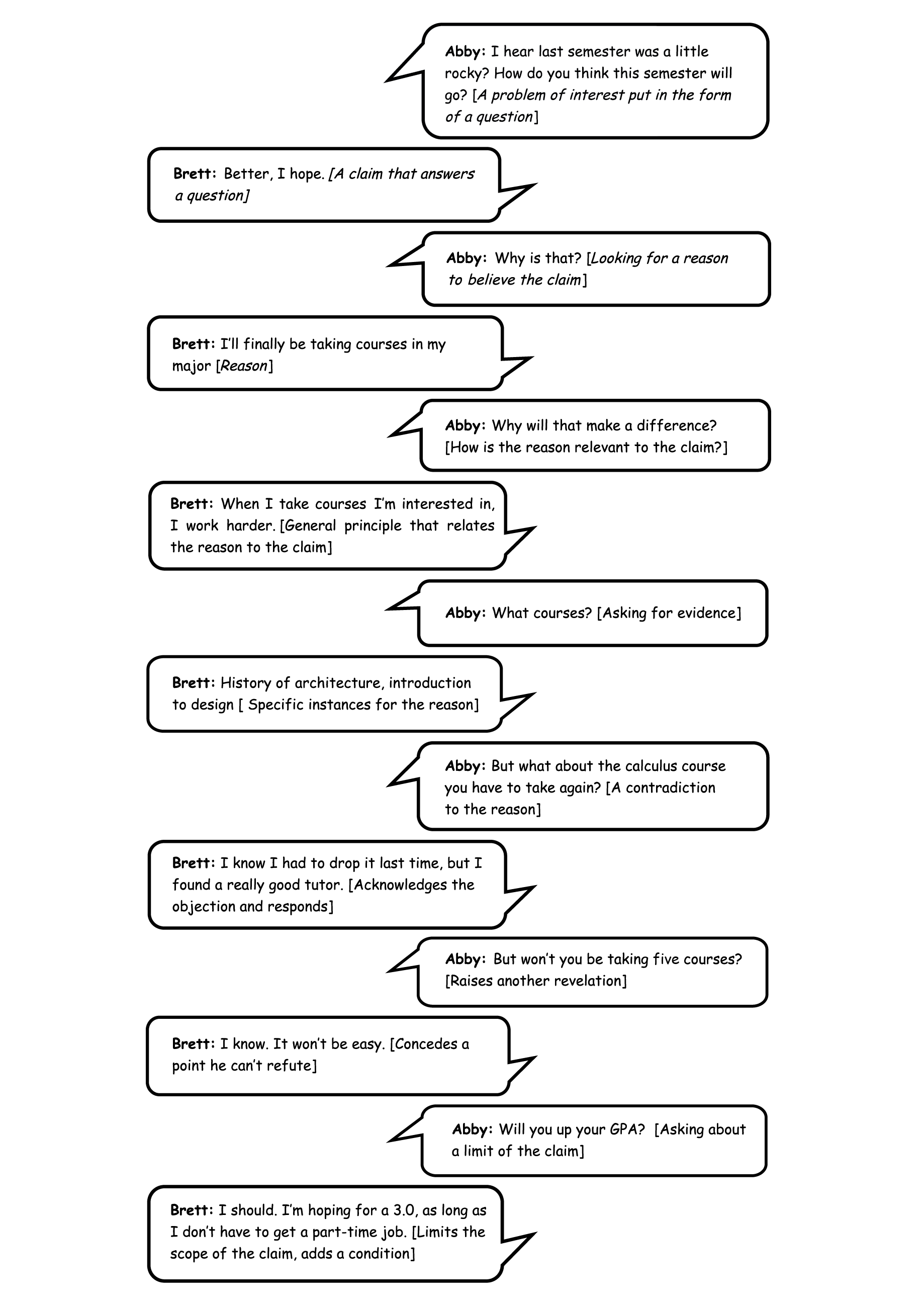Components of an Argument
Making an argument in an essay, term paper, blog post, or other format is like laying out a case in court. Just as there are conventions that attorneys must adhere to as they make their arguments in court, there are conventions in arguments made in research assignments. Among those conventions is to use the components of an argument.
Let’s be clear the components of arguments include:
- Claim: What do you want me to believe? What’s your point?
- Reasons: Why do you say that? Why should I agree?
- Evidence: How do you know? Can you back it up?
- Acknowledgment and Response: But what about…?
- Warrant: How does that follow? What’s your logic? Can you explain your reasoning?
EXAMPLE: Argument as a Dialog – Can you pick out the argument components?
Here’s a dialog of an argument, with the most important components labeled.

